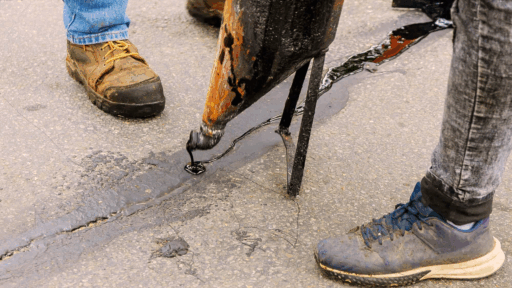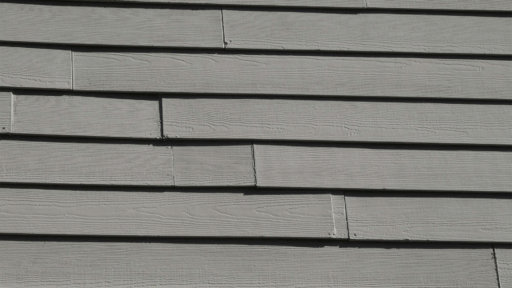Concrete might look tough, but it’s not invincible. Like any building material, it has its weak spots and challenges.
Most homeowners will face concrete issues at some point, whether it’s a mysterious crack, a crumbling corner, or a stubborn stain that just won’t budge.
This guide is your go-to resource for understanding concrete troubles. I’ll break down:
- Common concrete problems
- How to spot warning signs
- Prevention strategies
I know concrete repair sounds intimidating. But don’t worry. By the end of this post, you’ll know how to identify issues early, save money on potential repairs, and protect your property’s foundation.
Ready to become a concrete care expert? Let’s get started.
Top Concrete Problems Every Homeowner Should Know
Concrete isn’t invincible. Understanding its common issues can save you time, money, and headaches. These are the top issues that can affect your concrete surfaces, ranging from driveways to foundations.
1. Cracks

Not all cracks spell disaster. Some are just a concrete way of settling in. Hairline cracks can appear from natural shrinkage or temperature changes.
Wider cracks might signal deeper issues. Think of them like wrinkles; some are natural, some need closer attention.
Watch their width and direction. If they’re growing or spreading, it’s time to investigate.
2. Spalling and Flaking
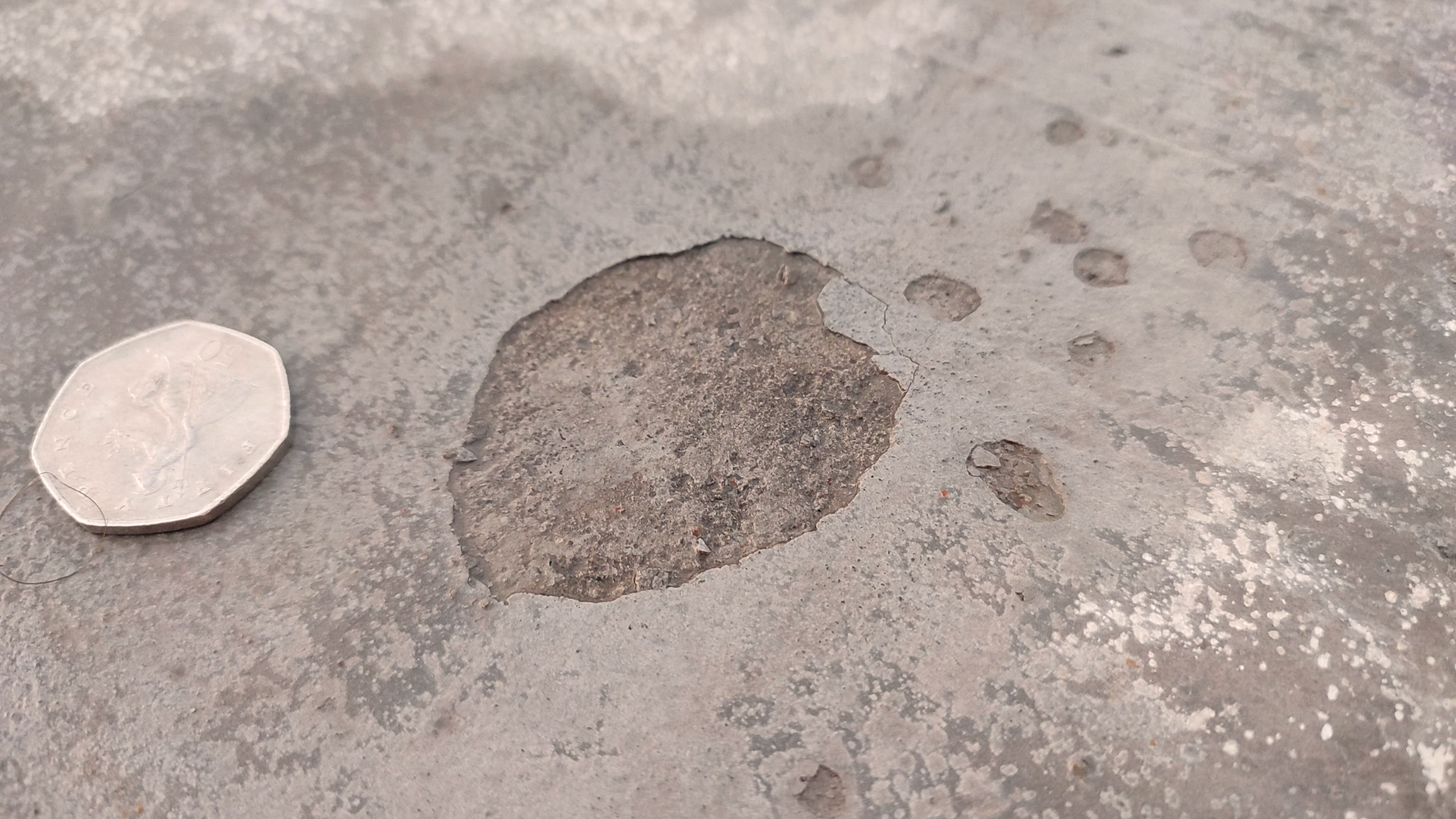
Chunks breaking off your concrete surface? This happens when moisture gets trapped and then freezes.
Imagine your concrete surface as a jacket with water inside – when it freezes, the fabric starts to break apart.
Freeze-thaw cycles and poor initial concrete finishing can cause this problem. Typically seen in driveways and outdoor surfaces where water frequently collects.
3. Scaling
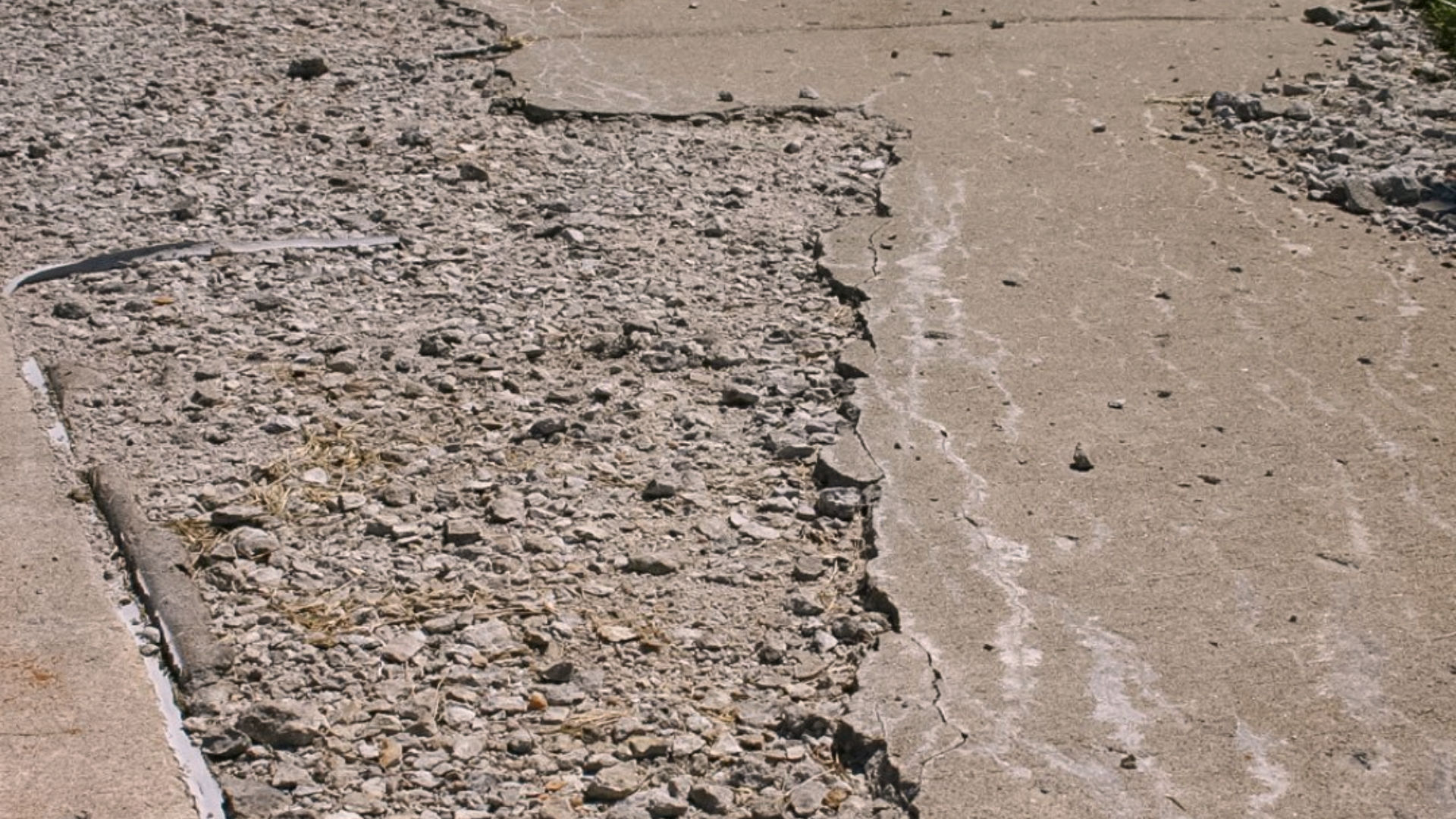
Salt and poor curing are scaling’s worst enemies. Your concrete starts losing its top layer, bit by bit. It’s like your skin peeling after a bad sunburn.
Deicing salts accelerate this process, wearing down the surface faster than natural aging.
Outdoor surfaces, such as driveways and patios, are most vulnerable to this concrete challenge.
4. Discoloration

Concrete isn’t supposed to look like a tie-dye experiment. Uneven colors can signal deeper problems. Water marks, inconsistent curing, or chemical reactions cause these patches.
Sometimes it’s just cosmetic, other times it hints at moisture issues. Each stain tells a story – learn to read the signs your concrete is sharing.
5. Dusting
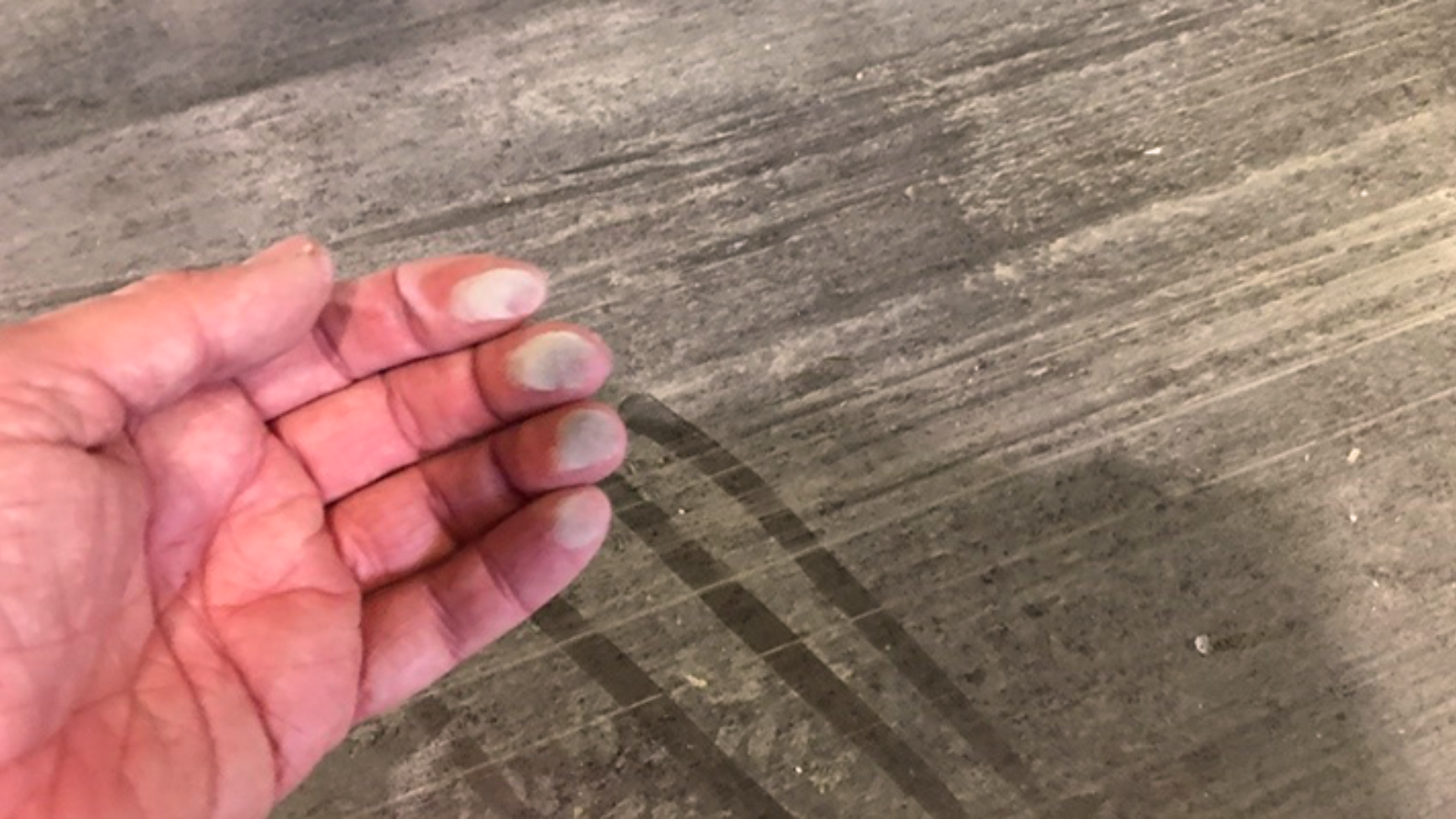
When your concrete feels like it’s turning to powder, you’ve got dusting. Imagine rubbing your hand across the surface and leaving a white residue.
This happens when the top layer of concrete breaks down, often due to excess water during mixing or improper finishing. It’s a sign of weakness in your concrete’s surface structure.
6. Pop-outs
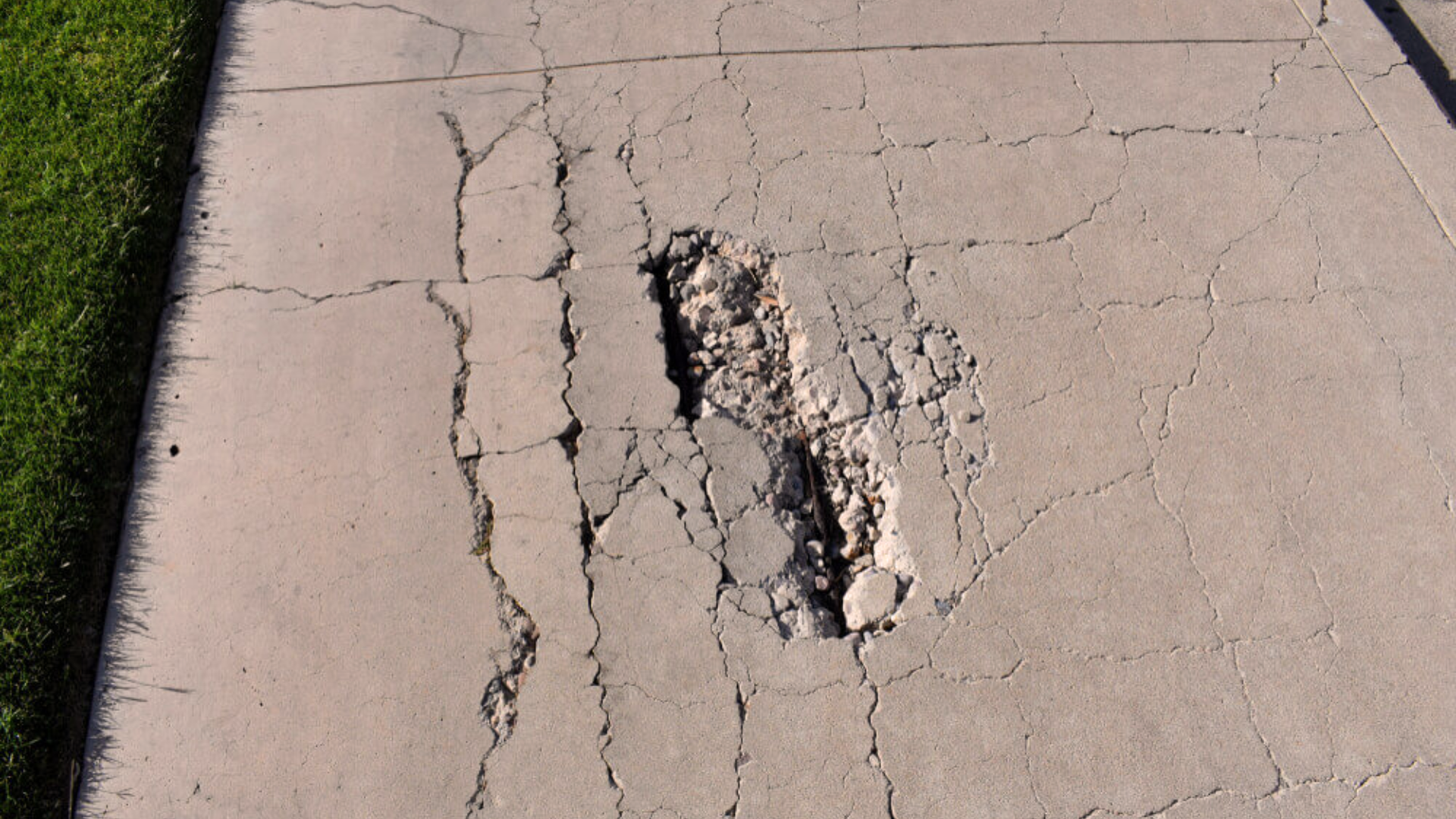
Small pitted holes that make your concrete look like Swiss cheese. Trapped moisture or air bubbles create these tiny craters.
During concrete mixing or curing, these little troublemakers get stuck and eventually push their way out.
They’re more than cosmetic; they can indicate deeper mixing or preparation issues.
7. Efflorescence
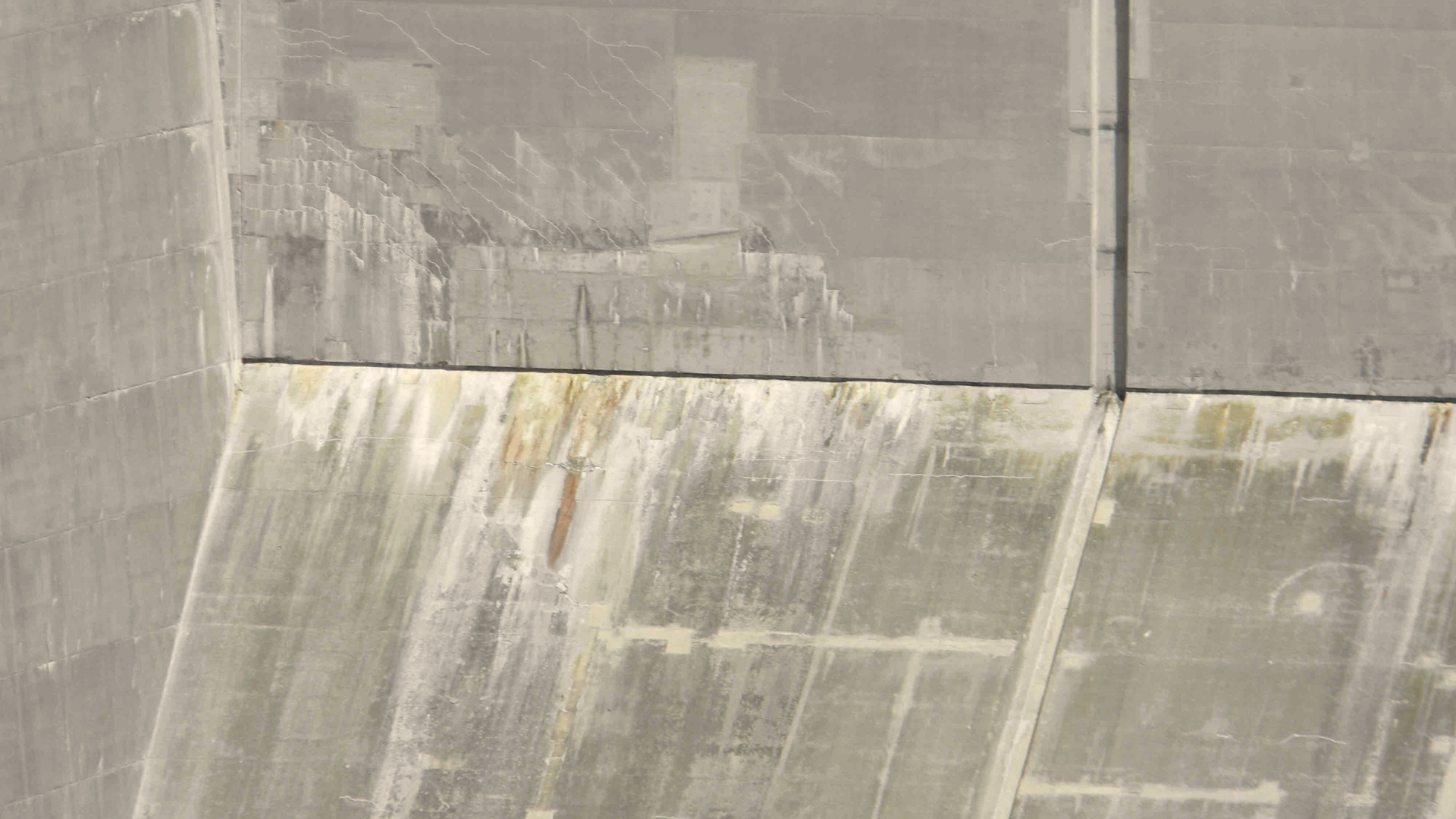
White, salt-like crystals appear on your concrete surface. It looks like someone sprinkled powdered sugar across your slab.
Moisture moving through the concrete carries dissolved salts, which then evaporate, leaving behind these white marks. More than just ugly, it can signal ongoing moisture problems.
8. Rebar Corrosion

Steel reinforcement inside concrete starts to rust and expand. Think of a balloon slowly inflating inside a tight space.
As rebar corrodes, it pushes against the concrete, causing internal pressure and ultimately leading to cracking.
This is serious; it can compromise your concrete’s structural integrity from the inside out.
9. Heaving
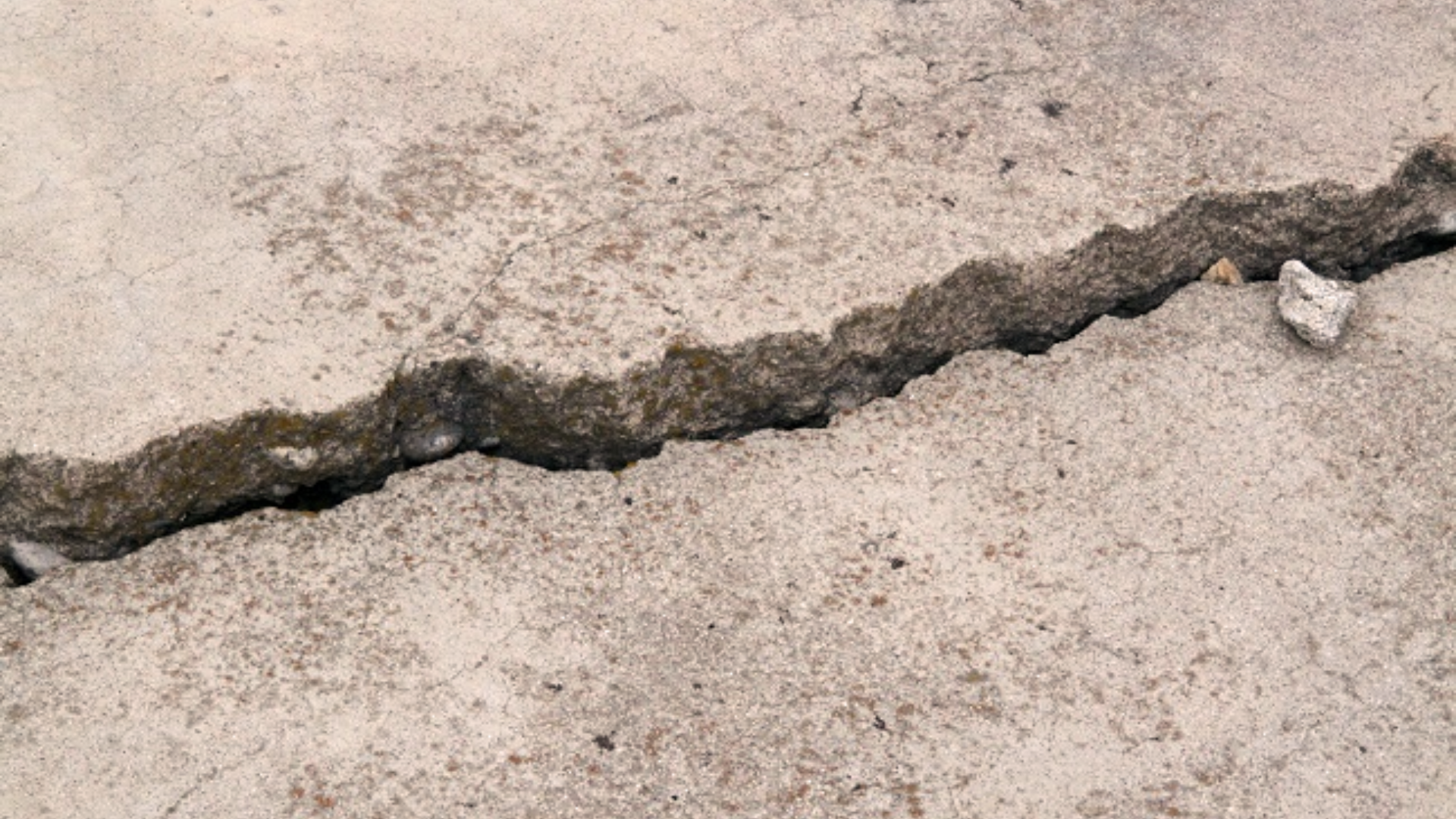
Slabs that suddenly decide to lift themselves up. Frost or aggressive tree roots can push concrete upward, creating uneven surfaces.
It’s like your concrete is trying to escape the ground. This can create trip hazards and indicate significant ground movement beneath your slab.
10. Sinking and Settling
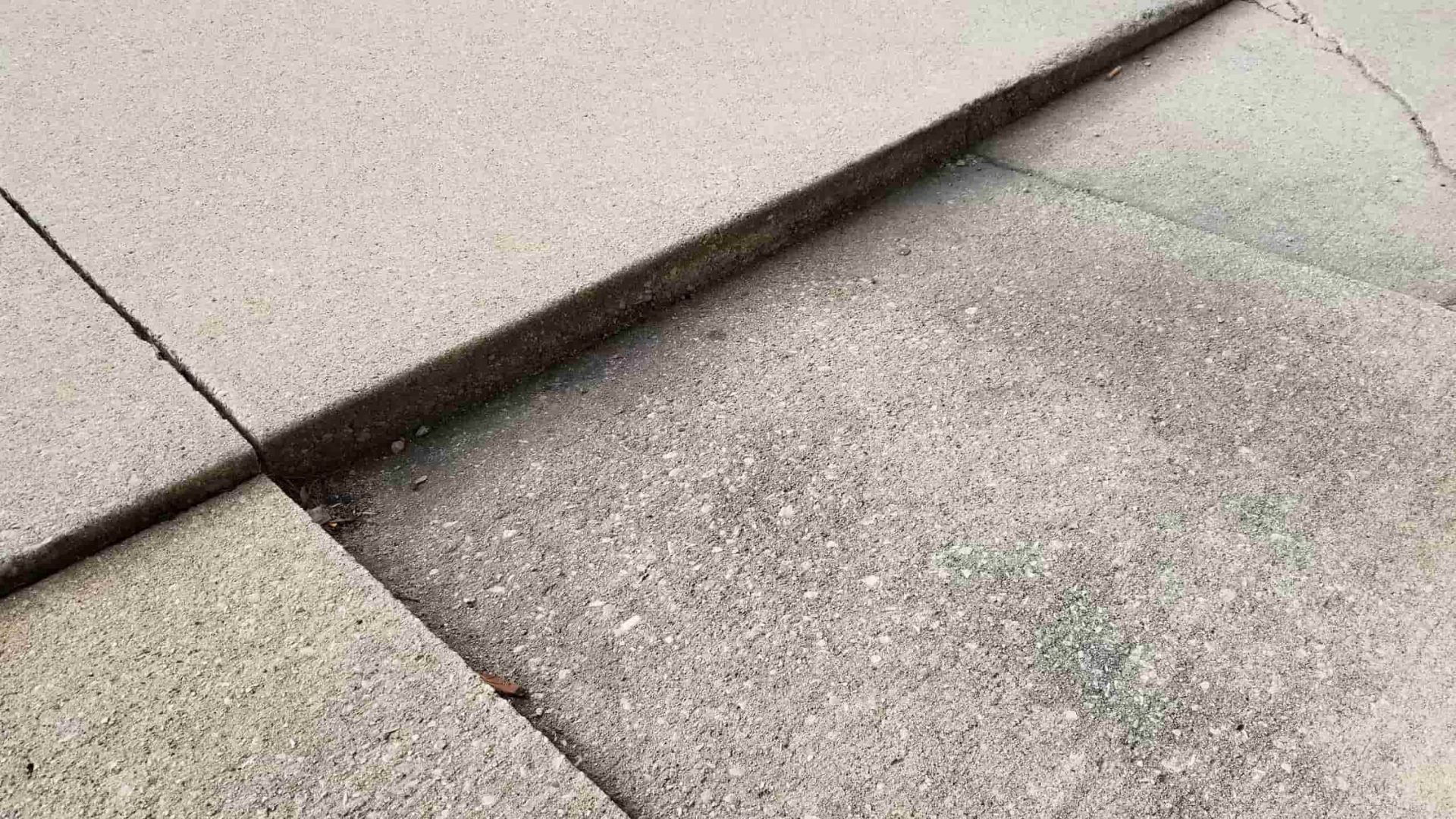
Your concrete starts dropping or creating uneven surfaces. Poor soil preparation is usually the villain here.
The ground underneath can’t support the weight, causing sections to sink. It’s like building a house on quicksand; things are going to move, and not in a good way.
11. Crazing
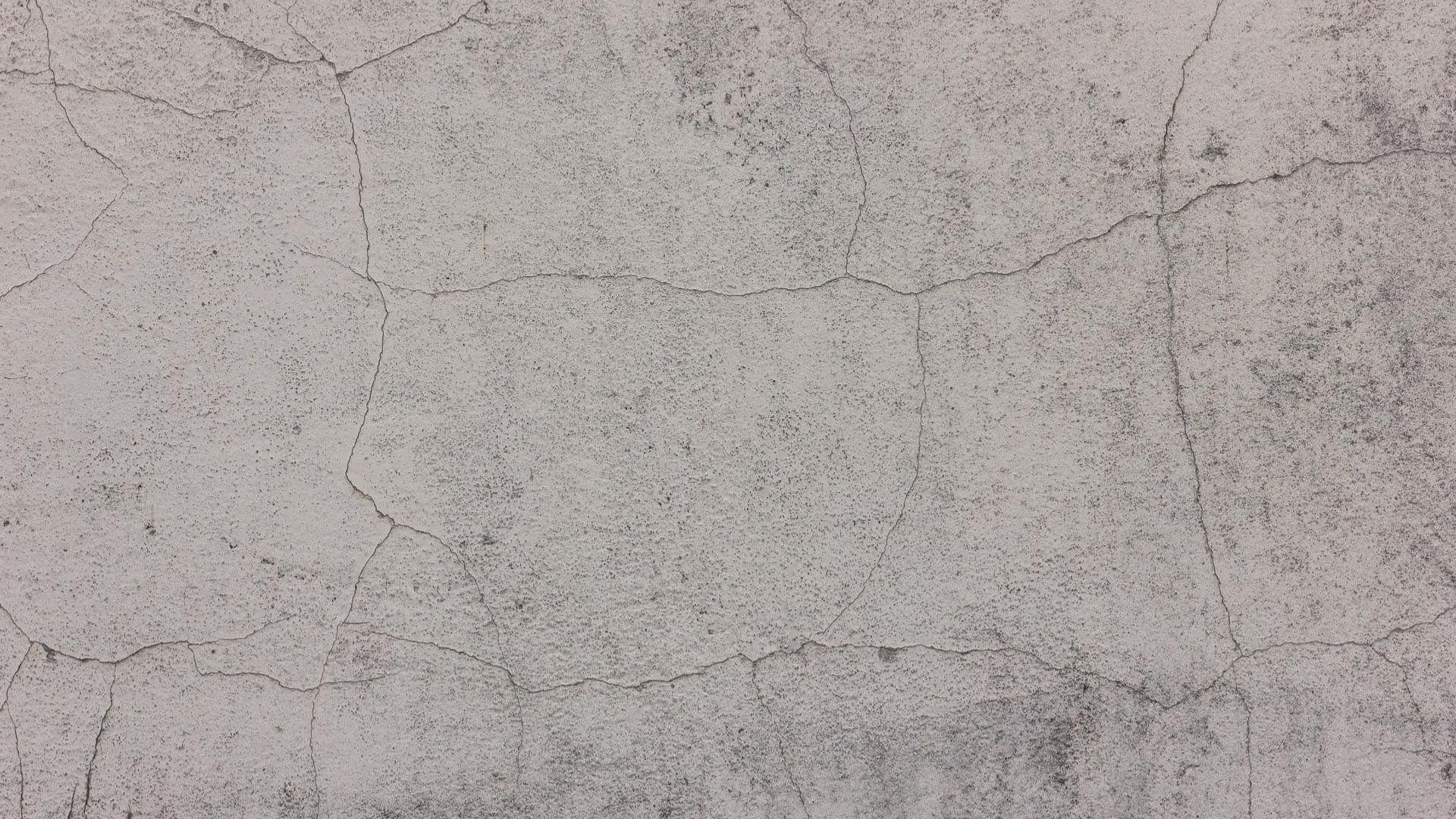
Looks scary, but often more bark than bite. Imagine a spider web of fine surface lines.
These intricate, shallow cracks spread across the surface, looking worse than they are.
Usually cosmetic, they result from surface tension during the curing of concrete. They rarely indicate structural problems.
Troubleshooting Concrete Problems
Concrete isn’t just a static surface; it’s a living material that responds to the environment, usage, and time. This will help you identify, understand, and solve common concrete challenges before they become expensive repairs.
1. Identifying Surface Cracks
Not all cracks spell disaster, but understanding their type matters. Hairline cracks are usually harmless and happen due to natural concrete shrinkage.
Think of them like laugh lines on an old friend – just character, not a serious problem.
These minor imperfections often appear as the concrete settles and shouldn’t cause immediate worry.
2. Assessing Crack Severity
Determining the seriousness of a concrete crack requires a careful eye and some basic knowledge. How can you tell if a crack is something to worry about? Width is your first clue.
If the crack is narrower than your card’s width, you can breathe easy. Wider cracks signal that something more might be happening beneath the surface, and it’s time to investigate further.
3. Repair Strategies for Minor Cracks
The process begins with thoroughly cleaning the crack to remove any debris or loose concrete. Choose water-resistant products to fight moisture, concrete’s sneaky enemy.
You’ll want to use a concrete patch or sealant, applying it carefully with a putty knife.
The key is to work slowly and smoothly, ensuring the repair blends seamlessly with the existing surface. Take your time and pay attention to the details.
4. When to Call a Professional
Some concrete situations clearly require expert intervention. You’ll want to pick up the phone if you notice specific warning signs that go beyond simple surface repairs.
These include cracks wider than 1/4 inch, uneven surface levels, cracks near foundation walls, or water seeping through the concrete.
These signs suggest deeper problems that could compromise the structural integrity of your concrete surface.
5. Prevention Is Better than Repair
Nobody wants to battle concrete issues constantly. Prevention becomes your best strategy for maintaining strong, lasting concrete surfaces.
The process starts long before the concrete is even poured.
Ensure proper concrete mixing with high-quality materials. Control environmental conditions during pouring to minimize potential cracking.
Adding reinforcement at the right stages can significantly improve concrete’s long-term performance.
6. Understanding Concrete’s Personality
Concrete isn’t a static material – it’s alive in its own way. Temperature, moisture, and ground movement all play crucial roles in its behavior and appearance.
Like any material, concrete responds to its environment, expanding and contracting with changes in temperature and humidity.
Understanding these natural characteristics helps you manage expectations and spot potential issues early.
7. Monitoring and Maintenance
Regular attention prevents major concrete problems from developing. Every few months, take a walk around your concrete surfaces and look closely at their condition.
Note any changes in existing cracks and take photos for comparison. This simple practice can help you catch potential issues before they become significant problems.
True Signs of Foundation Problems
Foundation issues don’t always start with major damage. Many warning signs are small at first, but knowing what to look for can help you catch problems early, before they lead to costly repairs.
- Cracks in walls, floors, or ceilings: Thin cracks are normal, but wide, jagged, or spreading cracks may signal trouble.
- Sticking doors and windows: If they suddenly won’t open or close smoothly, the frame could be shifting with the foundation.
- Uneven or sloping floors: Floors that feel tilted or bouncy may mean the foundation isn’t being supported evenly underneath.
- Gaps around windows or doors: When walls pull apart, you may see gaps where they once fit snugly.
- Cracked or leaning chimneys: Chimneys are heavy, and any leaning or cracking could indicate sinking or shifting below.
- Bulging or cracked foundation walls: These are serious signs that the structure is under pressure or moving.
Spotting these signs early can save you time, money, and stress. If you notice more than one, it’s a good idea to get a professional inspection before things get worse.
How Does Weather Affect Concrete Over Time?
Find out how weather changes your concrete surfaces and what you can do to protect them from nature’s relentless impact.
- Freeze-thaw cycles: In colder climates, water can seep into small cracks and freeze. As it expands, it widens the cracks and weakens the surface.
- Heavy rain and moisture: Too much water can erode the surface or seep into the foundation, leading to soft spots or shifting.
- Extreme heat: Hot weather can cause the concrete to expand, leading to cracking and surface flaking over time.
- Dry spells: Lack of moisture can make the ground beneath the concrete shrink, which may cause settling or uneven slabs.
- Humidity changes: Fluctuating moisture levels can stress the concrete, especially if it wasn’t sealed properly.
- Sun exposure: UV rays can break down surface sealants, making concrete more vulnerable to stains and damage.
Quick Weather Protection Checklist
- Fill small cracks immediately
- Use quality concrete sealant
- Create good drainage around concrete surfaces
- Remove standing water quickly
Pro tip: Your concrete is like your skin. Protect it, and it will age gracefully.
Concrete in Outdoor vs. Indoor Settings
Concrete isn’t a one-size-fits-all material. Its challenges change dramatically based on location. Let me break down the key differences that most people miss.
| Setting | Common Problems | Unique Challenges | Protection Strategies |
|---|---|---|---|
| Outdoor Concrete | • Surface cracks • Flaking • Color fading • Stubborn stains • Scaling | • Direct sun exposure • Tree root pressure • Extreme weather shifts • Heavy foot/vehicle traffic | • Use UV-resistant sealers • Apply annual protective coating • Remove stains quickly • Trim nearby tree roots • Regular surface cleaning |
| Indoor Concrete | • Surface dusting • Subtle cracking • White powdery residue (efflorescence) • Moisture marks | • Poor ventilation • Hidden moisture buildup • Less natural air circulation • Potential pressure from house settling | • Install dehumidifiers • Ensure proper basement/garage ventilation • Use moisture-blocking sealers • Check for hidden water leaks • Monitor humidity levels |
Indoor and outdoor concrete live different lives. Outside, it battles nature. Inside, it fights hidden moisture and pressure.
Conclusion
Don’t let concrete challenges overwhelm you. Most issues are totally manageable with the right knowledge and a proactive approach.
Remember my key lessons:
- Spot problems early
- Understand what causes damage
- Know when to DIY and when to call professionals
Your concrete doesn’t have to be a mystery. A little attention goes a long way. Take a quick walk around your property right now.
Inspect your driveway, basement, and patio for subtle changes, tiny cracks, or unusual surfaces.
I’ve helped countless homeowners turn their concrete from troubled to terrific. You’ve got this. Small steps today prevent big repairs tomorrow.
Your home’s foundation is counting on you. Stay observant, stay prepared, and you’ll keep your concrete strong and solid for years to come.

